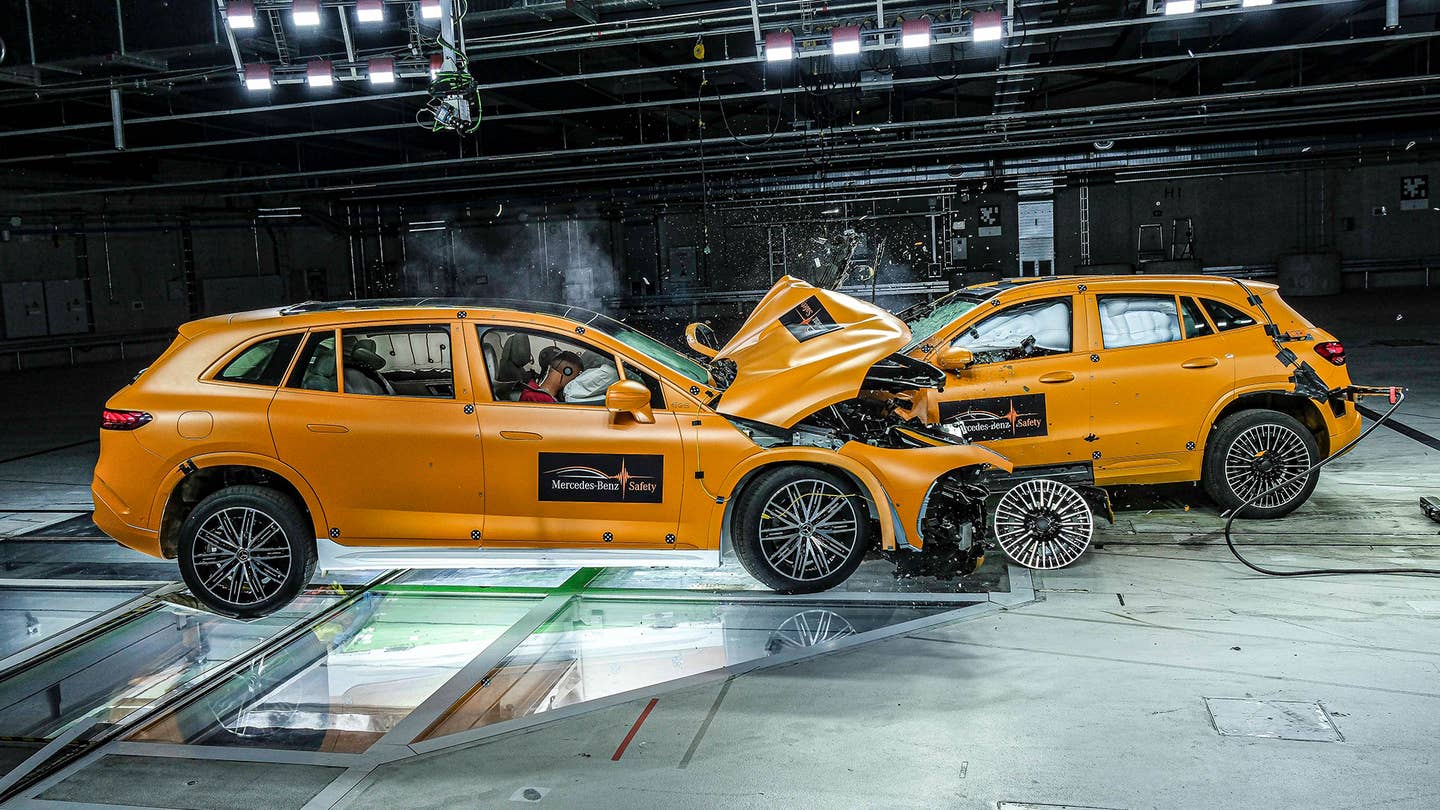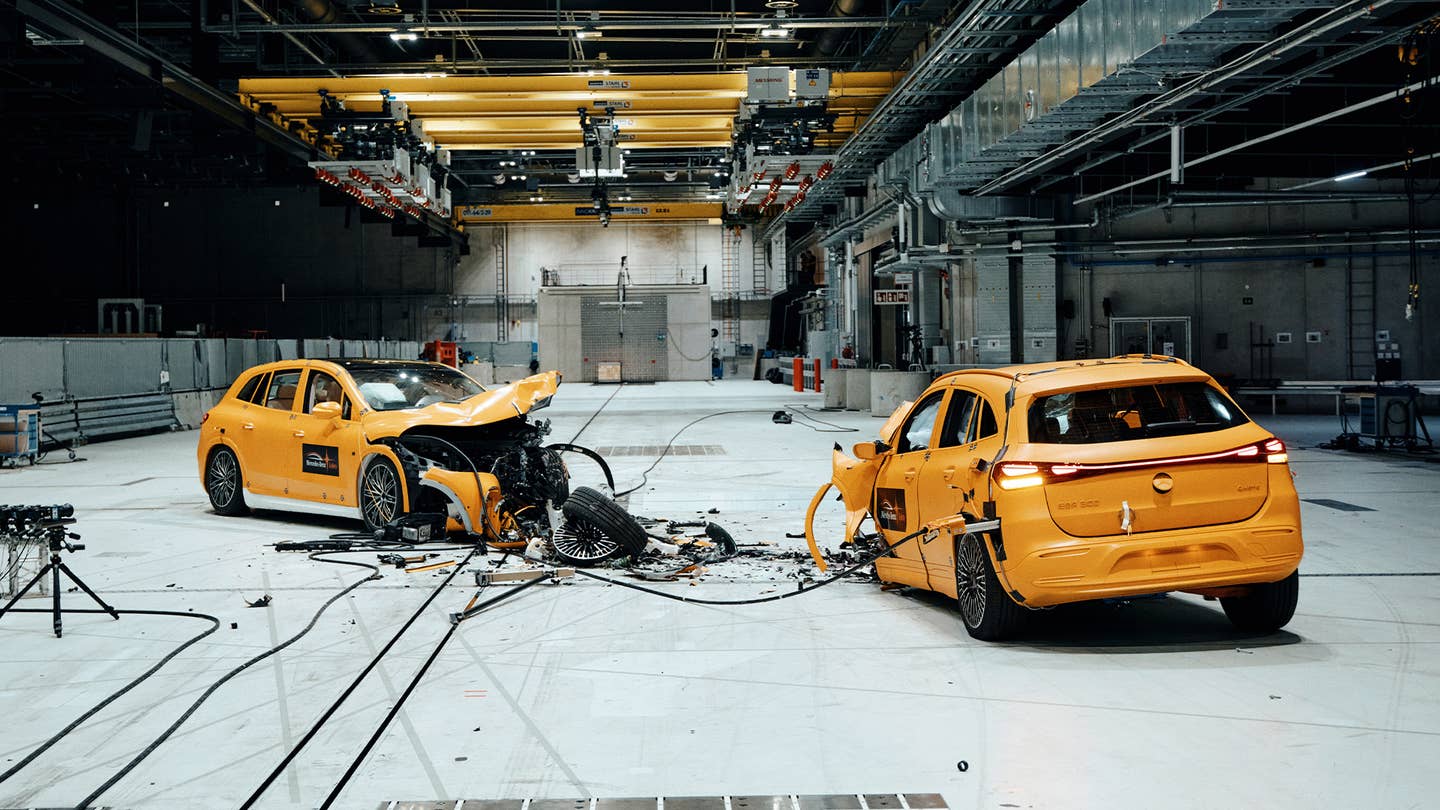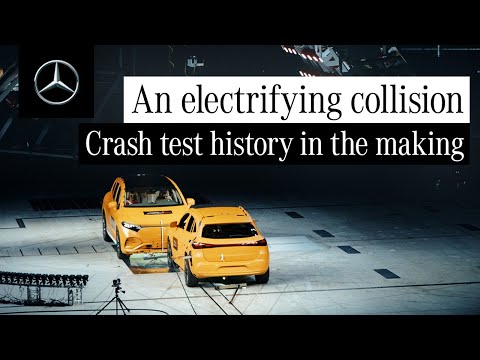Automobiles are becoming more weighty. With the continuous expansion of vehicles and the increasing prevalence of fully electric cars equipped with large, heavy battery packs, the mass traveling at high speeds on the road raises some legitimate concerns.
Mercedes-Benz aims to demonstrate that despite the weight of an electric vehicle, it can still maintain safety in a collision. To showcase this, the German automaker staged a collision between two of its electric SUVs. Mercedes claims that this marks the “first public crash test globally involving two fully electric vehicles.”

source: Mercedes-Benz
Essentially, this test replicates the European New Car Assessment Program (NCAP). In the NCAP frontal crash test, a vehicle faces off against a mobile trolley. The vehicle collides with the trolley with a 50% overlap at a speed of 31 MPH (50 km/h) and is then assigned a safety rating.
Mercedes’ test aims to mirror the NCAP speeds and positioning. However, instead of encountering a 3,080-pound cart, the automaker directed its two electric SUVs towards each other: the approximately 4,400-pound EQA and the 6,000-pound EQS. Additionally, they increased the speed to 35 MPH (56 km/h).
The automaker explains that they selected this test because it is a common scenario on rural roads during a passing maneuver. The speed was chosen to better resemble real-world conditions, assuming that both vehicles involved in the collision would be traveling at higher speeds before braking just prior to impact.
After the collision, the high-voltage electrical systems in both vehicles were automatically deactivated to prevent any potential fires. The passenger cell, the region surrounding the cabin, remained intact, and despite the wreckage, the doors could still be opened, allowing occupants to exit the vehicles. Professor Paul Dick, Mercedes’ Director of Vehicle Safety, noted that the batteries in both SUVs remained stable, indicating a low likelihood of fatal injuries for the occupants, including the dummies used in the test.

Both electric SUVs lost their front-left wheels in the collision. source: Mercedes-Benz
Despite being an engaging and educative watch for engineers, the automaker aspires for a future where such tests won’t be requisite anymore. Mercedes-Benz’s Chief Technology Officer, Markus Schäfer, expressed the company’s goal of achieving “zero accidents involving a Mercedes-Benz vehicle” by 2050. That’s an ambitious target to pursue. Volvo, back in 2008, had set a goal of having zero injuries or fatalities in its cars by 2020. Unfortunately, recent data in the U.S. hasn’t been encouraging in that aspect. Mercedes intends to leverage the semi-autonomous driving technology present in Drive Pilot to aid in achieving their objective.
Until the day when this vision becomes a reality, car manufacturers will continue conducting crash tests and documenting the outcomes. All in the pursuit of scientific advancement, naturally.
Contact the author directly for any tips or queries: rob@thedrive.com

